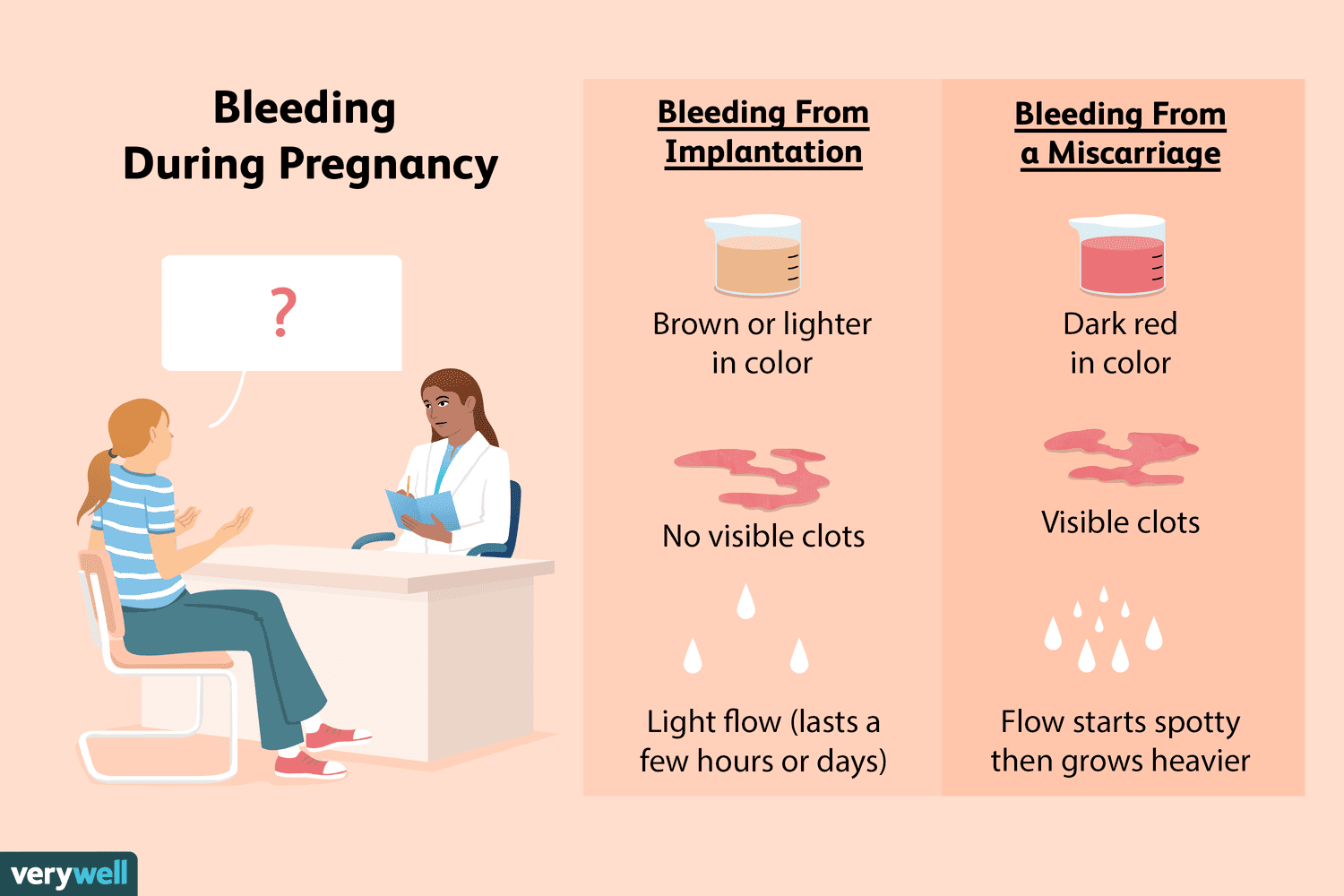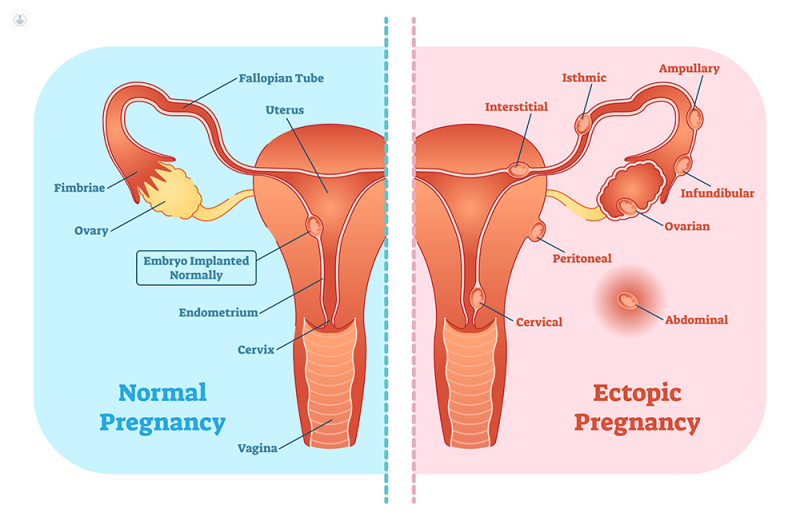Miscarriage is the spontaneous loss of a pregnancy before the 20th week, often accompanied by heavy bleeding, whereas implantation bleeding is a light spotting that occurs when the fertilized egg attaches to the lining of the uterus. Understanding the difference between miscarriage and implantation bleeding is crucial for expectant mothers.
Early pregnancy can be a time of both excitement and anxiety, especially when a woman notices bleeding. Recognizing the distinction between a miscarriage and implantation bleeding can help alleviate concerns and guide women in seeking appropriate medical care. A miscarriage is an unfortunate event characterized by substantial bleeding, clots, and possibly pain and cramping as the body expels the pregnancy tissues.
On the other hand, implantation bleeding typically presents as minor spotting or a light bleed, is short-lived, and usually takes place around the time a menstrual period is due but is much lighter. Vigilance and, when necessary, timely consultation with a healthcare provider can ensure women receive the support and care they need during these sensitive times.
Defining The Terms
Defining the Terms fuels understanding of two distinct reproductive events. Knowledge empowers women to identify normal processes from concerning symptoms. A clear grasp of these terms enhances awareness and promotes timely medical attention when needed.
Miscarriage: A Brief Look
A miscarriage signifies the loss of a pregnancy before 20 weeks. This is a common occurrence affecting around 10-20% of known pregnancies. Distress and confusion often follow, making it vital to distinguish it from other types of bleeding.
Symptoms of a miscarriage can include:
- Vaginal bleeding heavier than a period
- Passing tissue or clots
- Severe cramps and abdominal pain
- Back pain
Implantation Bleeding: The Basics
As the embryo nestles into the uterine lining, Implantation Bleeding may occur. This is much lighter than menstrual bleeding. It is a normal sign and usually nothing to worry about.
Features of implantation bleeding include:
| Duration | Color | Flow |
|---|---|---|
| A few hours to 3 days | Pink to brown | Light spotting |
It is critical to monitor the symptoms. If in doubt, seeking medical advice is the best course of action. Understanding the differences ensures peace of mind and safeguards health.
:max_bytes(150000):strip_icc()/ImplantationBleeding-3188f1a9682944a1a6fbea0a14f9874e.jpg?w=640&ssl=1)
Credit: www.health.com
Physical Manifestations
Bleeding during early pregnancy can be scary. It can mean different things. It’s important to know the difference between miscarriage and implantation bleeding. Each one has its own signs.
Signs Of Miscarriage
Miscarriage, also called early pregnancy loss, is when a baby dies before the 20th week. Many women experience it. About 10 to 20 percent of known pregnancies end in miscarriage. Here are common signs:
- Vaginal bleeding that can be light or heavy, constant or irregular.
- Clot-like material or tissue passing from the vagina.
- Strong cramps that feel like period pain, more intense and painful.
- Back pain, ranging from mild to severe.
- Decrease in pregnancy symptoms, like nausea or breast tenderness.
Characteristics Of Implantation Bleeding
When the baby first attaches to the womb, some women notice implantation bleeding. It’s different from miscarriage bleeding. Look at how:
| Feature | Implantation Bleeding |
|---|---|
| Color | Usually light pink to dark brown. |
| Duration | A few hours to a few days. Not long. |
| Amount | Not much. It’s often just a few drops. |
| Timing | About 10-14 days after conception. Around when a period is due. |
| Pain | None or mild. Not like period cramps. |
It’s important not to confuse the two. Spotting does not always mean a problem. But it is always good to talk to the doctor if it happens.
Timing Is Key
Timing Is Key when differentiating between a miscarriage and implantation bleeding. Confusion often arises due to the presence of bleeding in both scenarios. Yet, by paying attention to the timing, along with the characteristics and duration of the bleeding, women can gain clarity.
When Miscarriages Typically Occur
Miscarriages are most common in the first trimester. They typically happen before the 12th week of pregnancy. The symptoms might include:
- Heavy bleeding – more than a usual menstrual period
- Clotting – passage of tissue or clots
- Pain and cramping – often more intense than menstrual cramps
Implantation Bleeding: Timing And Duration
Implantation bleeding is different. It usually happens about 10 to 14 days after conception. This is around the time a woman’s period may be due. Implantation bleeding is usually:
- Light spotting – not requiring a pad or tampon
- Short-lived – often a few hours to a couple of days
- Pinkish or brownish – unlike the bright red of menstrual blood
The key signs help distinguish between the two. Understanding the timing can bring peace of mind to expecting mothers.

Credit: flo.health
Emotional And Psychological Aspects
The differences between miscarriage and implantation bleeding come with distinct emotional and psychological impacts. These moments can evoke a range of feelings. From joy to confusion, to deep sorrow. Let’s explore the emotional journeys and coping mechanisms for each experience.
Coping With Miscarriage
Miscarriage affects individuals profoundly. It often leads to grief akin to losing a loved one. Here are some ways to navigate these times:
- Allow yourself to feel: Suppressing emotions can prolong the healing process.
- Seek support: Speaking with friends, family, or support groups helps share the burden.
- Remember, it’s not your fault: Miscarriages are common and rarely caused by anything within control.
It takes time to heal after a miscarriage. Taking care of your mental health is crucial.
Understanding And Managing Concerns About Implantation Bleeding
Implantation bleeding can be alarming, but it’s often a sign of a new beginning. Know your body:
| Implantation Bleeding | Miscarriage Bleeding |
|---|---|
| Light spotting | Heavier, like a period |
| Short duration | Longer; several days |
| Pink or brown color | Usually bright red |
Talk with a healthcare provider if you are unsure about any symptoms. They will provide clarity and peace of mind.
Medical Attention And Support
Experiencing bleeding in early pregnancy can be alarming. Understanding when bleeding is a sign of something serious is key. Miscarriage and implantation bleeding are different. Both need careful monitoring and support from health experts.
When To Seek Help For Miscarriage
Bleeding during pregnancy might suggest a miscarriage. It’s vital to notice when symptoms need medical help. Look for these signs and seek immediate assistance:
- Heavy bleeding: Soaking pads every hour is not normal.
- Severe pain: Pain more intense than period cramps needs a check-up.
- Clot passing: If tissue or clots pass, it may indicate loss.
- No fetal movement: In later stages, a stop in movement is urgent.
- Weakening: Feelings of intense weakness or fatigue are red flags.
Contact your doctor or visit the emergency room if these symptoms appear.
Implantation Bleeding: When To Consult A Healthcare Provider
Implantation bleeding is lighter and shorter than a regular period. Spotting around the time your period is due could be implantation. Even so, let your healthcare provider know if you notice bleeding. It’s best to confirm its cause. Alert your doctor if you experience any of the following:
- Continued bleeding: If spotting lasts more than a few days, tell your doctor.
- Color changes: Dark brown to light pink is normal, bright red is not.
- Pain: Any significant discomfort should be evaluated.
Regular check-ups ensure you and your baby’s health are on track.
Prevention And Precautions
Understanding the difference between miscarriage and implantation bleeding is crucial. It helps expectant mothers know when to seek medical attention. Knowing what’s normal during pregnancy is just as important as recognizing the warning signs. Taking steps to reduce risk can provide peace of mind. Here, we will explore how to potentially lower the chances of a miscarriage. We will also distinguish between typical early pregnancy bleeding and symptoms that may require a doctor’s attention.
Reducing The Risk Of Miscarriage
Although not all miscarriages can be prevented, certain measures can minimize risks:
- Maintain a balanced diet. Nourish your body with fruits, vegetables, lean proteins, and whole grains.
- Stay hydrated. Drink plenty of water throughout the day.
- Regular prenatal care. Visit your healthcare provider for routine check-ups.
- Avoid harmful substances. This includes alcohol, tobacco, and other drugs.
- Monitor your health. Keep an eye on any chronic conditions with your doctor’s help.
Differentiating Normal Bleeding From Warning Signs During Early Pregnancy
Knowing what to look for helps identify when to see a doctor:
| Implantation Bleeding | Warning Signs |
|---|---|
| Light spotting | Heavy bleeding with clots |
| Pink or brownish discharge | Bright red bleeding |
| Stops within a few days | Continues for more than a few days |
| No significant discomfort | Accompanied by pain or cramps |
| Occurs around the time your period would normally start | Can occur at any time, unexpectedly |
If bleeding is heavy, persists, or you experience pain, seek medical advice immediately. Early detection and intervention can be key to your health and the pregnancy’s viability.

Credit: flo.health
Frequently Asked Questions For What Is The Difference Between Miscarriage And Implantation Bleeding
What Causes Implantation Bleeding?
Implantation bleeding occurs when a fertilized egg attaches to the lining of the uterus. This process can disrupt small blood vessels, leading to light spotting. This type of bleeding typically occurs about 10 to 14 days following conception and is usually lighter and shorter than a menstrual period.
How To Distinguish Miscarriage From Implantation Bleeding?
Miscarriage bleeding tends to be heavier and accompanied by cramping, back pain, and possibly clots. Implantation bleeding is usually lighter, possibly only spotting, without strong pain or clotting. Duration and flow intensity are key factors; implantation bleeding is brief and light, while miscarriage bleeding is usually more prolonged and heavier.
Can Implantation Bleeding Be Heavy?
Implantation bleeding is generally not heavy; it’s often just light spotting. If bleeding is heavy, it could be a sign of menstruation or a miscarriage rather than implantation. Any concerns about heavy bleeding should prompt a visit to a healthcare professional.
What Signs Accompany A Miscarriage?
A miscarriage may include symptoms such as heavy bleeding, strong cramps, abdominal pain, and the passing of tissue. If these symptoms are present, especially if accompanied by dizziness or intense pain, it’s important to seek immediate medical attention.
Conclusion
Understanding the key distinctions between miscarriage and implantation bleeding is crucial for expectant mothers. It arms them with knowledge to better interpret early pregnancy signs. Should concerns arise, consulting a healthcare professional is always the best course. Remember, while spotting can be normal, peace of mind comes from expert advice.
Stay informed, stay healthy.





